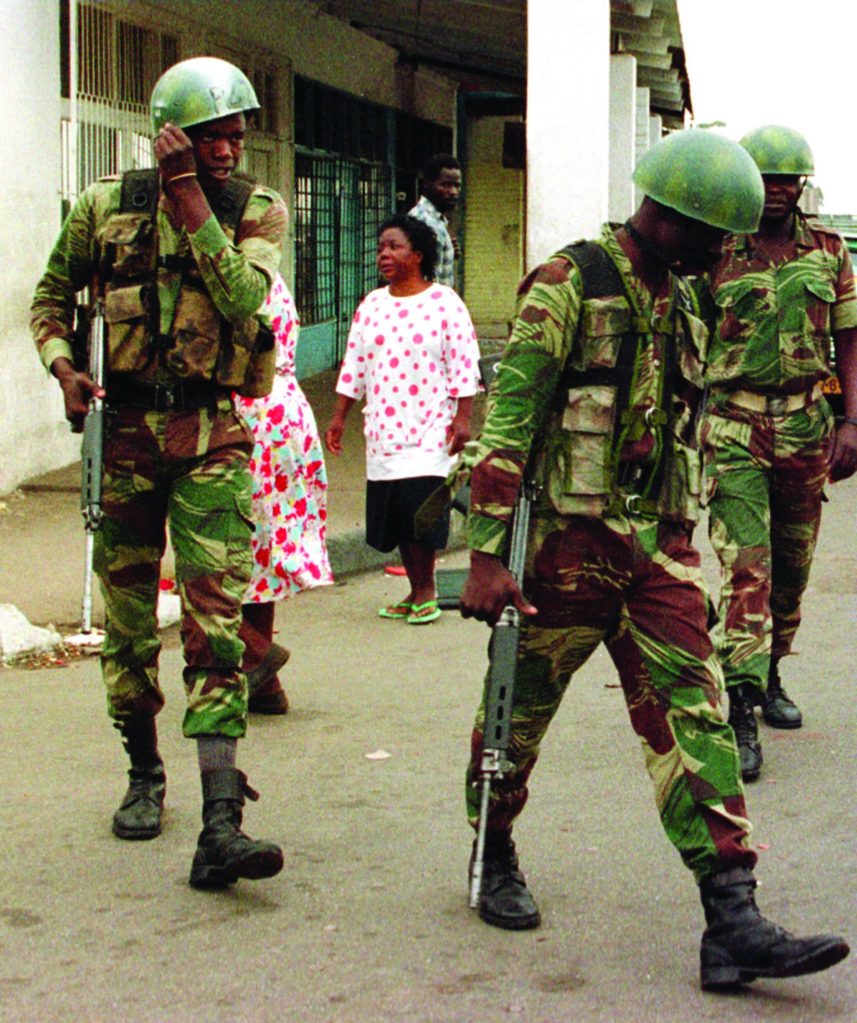It was chaos in the sun. Hundreds of students ran taunting and hurling stones at lines of police armed to the teeth, with tear gas and batons. All of this at a seat of learning, the University of Zimbabwe, in the quiet, green suburbs of Harare, which we filmed for the evening bulletins of South African network television.
“How many O-levels do you have?” shouts one cheeky student, to a distant line of police, before ducking and running.
The reply from the police: a broadside of tear gas that sends us scattering and choking; the cheeky student waits a few seconds before running back with a quip.
“I didn’t think so!”
The issue, in May 1995, was student grants, or the paucity of them, as the government of Zimbabwe tightened its belt.
Loading...
Day after day, the future lawyers, politicians and financial managers threw stones and held never ending open air meetings to berate the university’s chancellor, the late and avuncular Gordon Chavunduka. Everyone knew he was a sangoma – or traditional healer – known for their spiritual powers.
“Surely he, of all people, should have seen this coming!” says one orator, to the laughter of hundreds.
In those sunlit days this was truly an ice cream war. The lads on their tricycles, with ice boxes fixed to the front, used to gather a safe distance from the fighting. It meant you could dodge a police baton, run across to the ice cream sellers for a cooling cone, then charge back into the tear gas and mayhem.
It got worse as the winter of 1995 wore on. The police were reluctant to ill-treat the students, a number of whom were the sons and daughters of powerful people, when the TV cameras were about. So, one evening, they waited until our crew had left to feed their pictures to Johannesburg, before attacking the students with a vengeance. Riot police clattered through doors, broke bones and cut heads, flailing their way through campus. I can’t forget the image of one of the student leaders, Brian Kagoro, who is now a lawyer working for the UNDP, with several meters of bandage wrapped around his broken head.
This upping of the stakes provoked revenge. When the police sent a patrol car to the campus the students chased off the drivers and battered the vehicle onto its side. Worse still, one of the students opened the fuel tank, screwed up a newspaper, stuck it inside and set fire to one end – a large petrol bomb was about to go off.
The seconds ticked by as everyone watched the flames lick their way towards the fuel tank. Then an unwitting saviour strode in from nowhere. An English lecturer, who looked the part with a scruffy brown jacket, thick beard and a pipe, strolled through the scene of trepidation without noticing the chaos around him. As he drew level with the burning newspaper, he stopped, did a double take, before pulling the burning paper out of what was about to blow. The rest of us looked through our fingers and laughed in knowing relief. The lecturer walked off, puffing on his pipe, as if nothing had happened.
Fast forward to three years later and the riot police of Zimbabwe were finding their feet. On this sticky November day in 1997, I saw two helmeted riot police standing in the tree-lined Africa Unity square in the heart of Harare.
An old man approached the two riot police and must have asked them a question politely because I saw him clapping his hands as he spoke, a sign of respect in Zimbabwe. One smacked the old man to the ground with his baton while his fellow policeman kicked him in the guts. I ran over to help the old man up.
“Leave him alone,” I screamed knowing they could take me next.
One of the policemen looked me in the eye and threw a spitting, Israeli-made gas grenade, sending me coughing and wheezing out onto the street where thousands were running in anger. I kicked the gas grenade 30 meters across the road; to throw it back was to risk arrest. I never saw the old man again. Troops were on the streets weeks later.
Loading...
